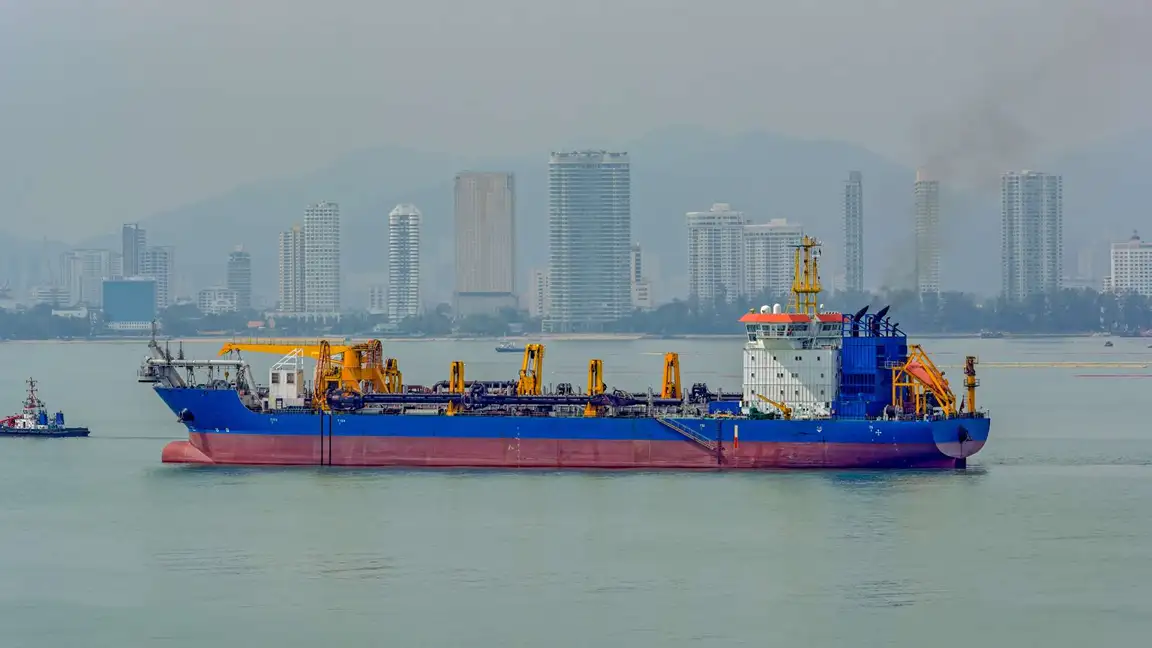Introduction
The expansion of offshore wind energy has introduced complex challenges, particularly when it comes to protecting subsea power cables. These cables play a vital role in transmitting energy from offshore turbines to the mainland grid. Ensuring their long-term durability against environmental forces is essential. One vessel that has demonstrated exceptional capability in this area is the Shoalway hopper dredger, owned and operated by Boskalis. Its recent project at the Borssele offshore wind farms in the Netherlands showcased its effectiveness in performing backfill operations to secure marine cable routes.
The Critical Need for Marine Cable Protection
Subsea cables, once installed, are vulnerable to shifting currents, seabed movement, marine activity, and erosion. In high-energy marine environments like the Western Scheldt, these threats are amplified. Without adequate protection, these cables can become exposed, leading to service disruptions or costly repairs.
To mitigate these risks, engineers use protective sand berms placed over the cable paths. However, the effectiveness of these berms depends on the precision of their construction and placement. A vessel capable of both sand extraction and controlled backfilling is needed, and the Shoalway hopper dredger meets this requirement exceptionally well.
Project Spotlight: Borssele Offshore Wind Farms
The Borssele 1 and 2 wind farms are located in the Dutch North Sea and play a key role in the Netherlands’ transition to renewable energy. These offshore installations are connected to the onshore grid through a complex export cable system that runs via the TenneT platform. Given the strong tidal currents in the region, the cables required reinforced protection to prevent potential erosion or displacement.
The Shoalway hopper dredger was selected for this mission due to its proven ability to handle high-precision backfilling in dynamic marine environments. Its intervention aimed to restore and reinforce the sand berm over the cable route, ensuring long-term stability.
Enter the Shoalway Hopper Dredger
The Shoalway hopper dredger is a trailing suction hopper dredger (TSHD) designed for flexible operation in coastal and offshore dredging projects. It can extract sand through its suction pipe and accurately discharge the material where needed, making it particularly effective for both dredging and backfill tasks.
For the Borssele project, this dual capability was essential. The vessel could remove material from designated areas and reposition it directly over the subsea cable, forming a uniform protective layer. This level of precision is difficult to achieve with other methods and highlights why the Shoalway hopper dredger is a preferred tool for marine infrastructure protection.
Backfill Operations at Borssele: A Technical Overview
In the Borssele operation, the Shoalway hopper dredger followed a pre-planned route directly aligned with the cable trench. Utilizing GPS and monitoring technologies, the crew ensured that the sand berm was placed with accuracy along the export cable’s path.
The dredger’s suction and discharge systems allowed controlled deposition of sand, forming a berm that could withstand the powerful tidal flows of the Western Scheldt. The operation was completed efficiently and with minimal disruption to the seabed environment, demonstrating the vessel’s suitability for such sensitive offshore work.
Results and Long-Term Impact
The result of the Shoalway hopper dredger’s operation was a reinforced seabed structure that provided lasting protection for the export cables. The newly formed berm is expected to remain stable for years, significantly lowering the risk of cable exposure and the need for future interventions.
By securing the cable with a long-lasting sand layer, the project minimized potential downtime and maintenance costs. The Shoalway hopper dredger’s precision and reliability directly contributed to the success of the mission and reinforced its reputation as a top-tier asset in offshore dredging and cable protection.
Broader Implications for Offshore Energy Projects
The successful use of the Shoalway hopper dredger at Borssele offers a valuable blueprint for other offshore energy projects facing similar challenges. As more countries invest in offshore wind and subsea energy infrastructure, the demand for precise and efficient backfilling solutions will continue to grow.
The Shoalway’s ability to perform exact placement of protective materials while operating in high-current environments makes it a valuable resource for wind farm operators and cable installation contractors alike. This approach not only enhances the physical protection of cables but also supports the sustainability and cost-efficiency of renewable energy projects.
Conclusion
The Shoalway hopper dredger has proven to be an indispensable tool in the ongoing effort to protect vital offshore energy infrastructure. Its successful backfill operation at the Borssele wind farms underscores the importance of precision and reliability in subsea cable protection.
With offshore wind projects expanding globally, the role of specialized vessels like the Shoalway hopper dredger will only become more critical. Through innovative engineering and operational excellence, Boskalis and its Shoalway dredger are helping to build the resilient, secure, and sustainable energy networks of the future.
